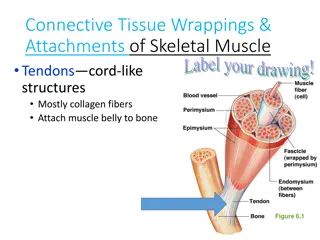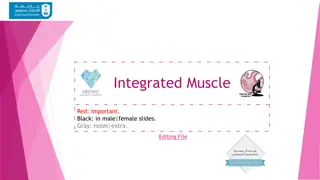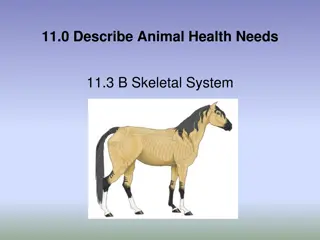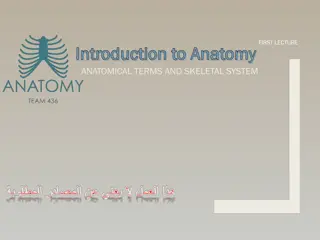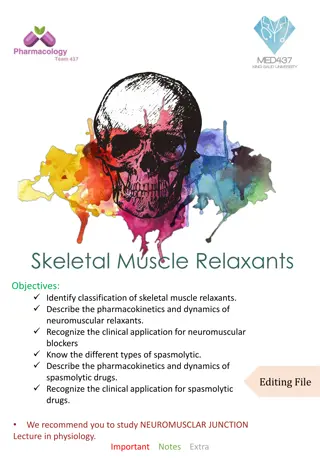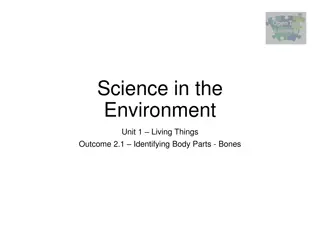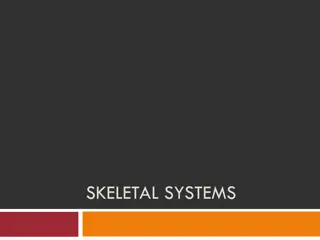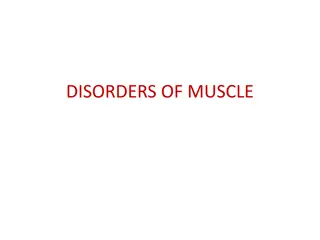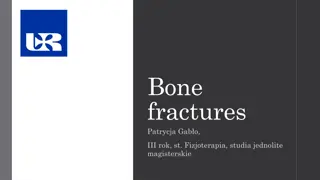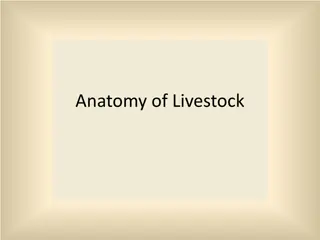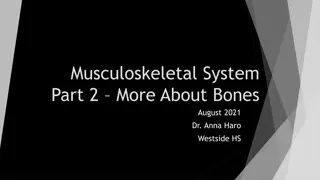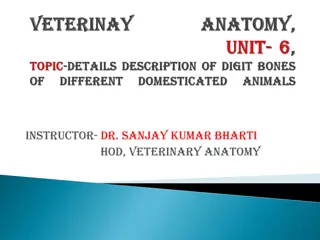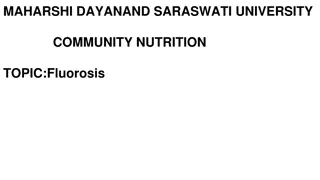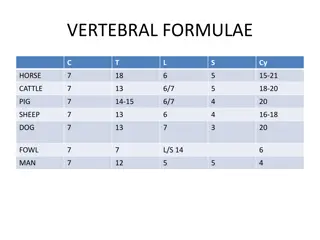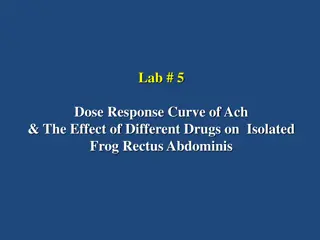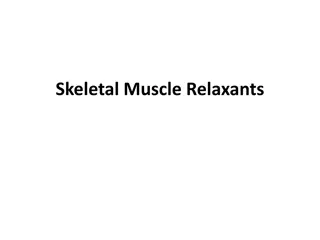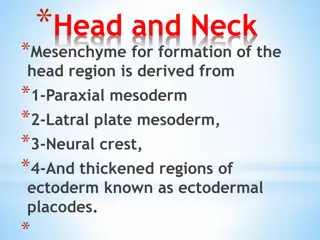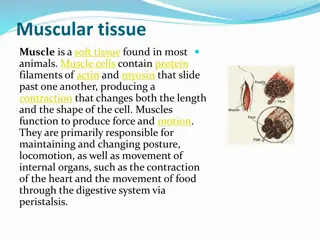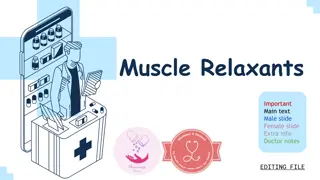Exploring the Human Skeletal System
The skeletal system is crucial for protecting organs, providing structure for movement, storing minerals, and producing blood cells. It consists of the axial and appendicular skeleton, with bones classified into long, short, flat, and irregular shapes. Long bones, such as the femur, play a key role in mobility and are composed of distinct sections like the diaphysis and epiphysis. Short bones offer support at joint areas, while irregular bones have unique forms to protect nervous tissue. Understanding bone structure and functions is essential for appreciating the complexity of the human body.
Download Presentation

Please find below an Image/Link to download the presentation.
The content on the website is provided AS IS for your information and personal use only. It may not be sold, licensed, or shared on other websites without obtaining consent from the author. Download presentation by click this link. If you encounter any issues during the download, it is possible that the publisher has removed the file from their server.
E N D
Presentation Transcript
Functions Protects our organs (brain, intestines, etc.) Provides a framework for the movement of our body through our muscles Stores minerals that our body needs to function properly Produces blood cells
Divisions of Skeleton Axial Skeleton: consists of the 80 bones that make up the trunk of our body. Appendicular Skeleton: consists of the other 126 bones in the human body and make up our limbs.
Shapes of Bones: Long bones Short bones Flat bones Irregular bones (Sesamoid bones)
L o n g Bones Longer than wide Carry most the load of our daily activities Crucial for skeletal mobility Examples: thigh bone (femur), tibia, and fibula
L o n g Bones Structure: Diaphysis: main shaft composed of compact bone Periosteum: membrane of living cells in diaphysis that allow tendons and muscles to attach themselves to bones Medullary cavity: hole that contains bone marrow Bone marrow: stores fat, produces blood cells, and plays an important part in the body s immune system Epiphysis (2 portions): part that is composed of cancellous bone and articular cartilage
Diaphysis Epiphysis Medullary cavity Bone marrow Epiphysis
Short Bones Approximately about as wide as long Provide support and stability at vital joint areas of the skeletal system Examples: wrist/carpal bones andankle/tarsal bones
Bones Protect vital softer tissues Provide a surface for muscle attachments
Ir r egular Bones Bones which, from their peculiar form, cannot be grouped/defined like the other types of bones Protect nervous tissue
Bones Sesamoid Found in locations where a tendon passes over a joint, such as the hand, knee, and foot. Functionally, they act to protect the tendon and to increase its mechanical effect.
Bones Bones have two inside parts: Compact bone Cancellous, or spongy, bone So named because of its holey appearance.
Types of tissue that form bones Compact bone: Supports the whole body Protects organs Provides levers for movement Stores and releases chemical elements (calcium) Dense, smooth and very strong Contains living cells which help make repairs if a bone is injured or broken.
Types of tissue that form bones Cancellous/spongy bone: Typically occurs at the ends of long bones, proximal to joints and within the interior of vertebrae Spongy and light weight Also, like compact bone, contains living cells which help make repairs if a bone is injured or broken.
Compact Bone Cancellous Bone
Ligaments The tissue that connects bones to other bones
Joints Joint: location where two or more bones make contact. Joints allow movement and provide mechanical support. There is a cartilage cushion in between the bones to keep them from touching directly which would hurt!
Joints Examples of Joints
Tendons Muscle Tendons: attach muscles to bone. They are made out of a tough connective tissue and are capable of stretching to allow for movement. Tendon Bone
Diaphysis Epiphysis Medullary cavity Bone marrow Epiphysis
Compact Bone Cancellous Bone
Axial Skeleton Sections: Skull Spine (vertebral column) Ribcage
Appendicular Skeleton Sections: Arms and hands (upper extremities) Legs and feet (lower extremities) Shoulders Hips (pelvis)


